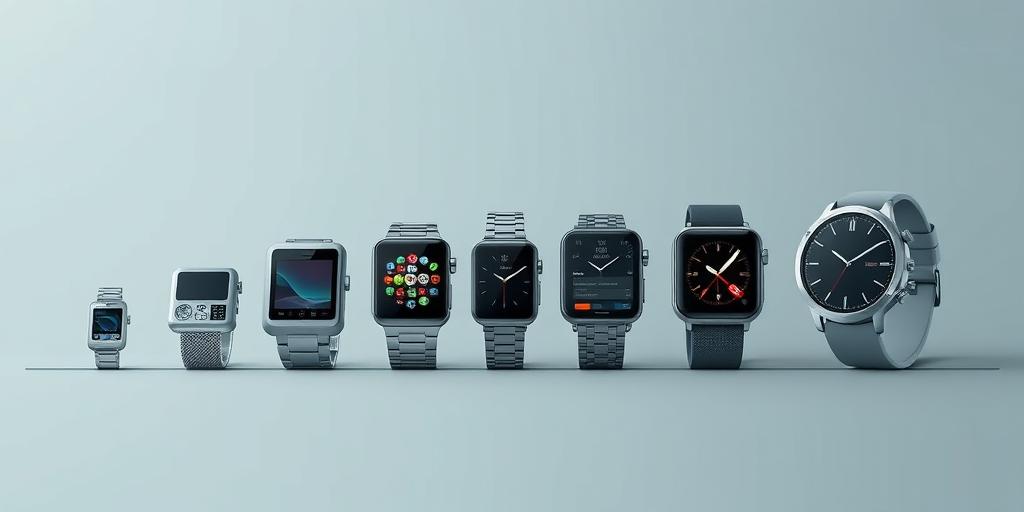The Rise and Fall of Wearable Tech: Lessons from the Past
Have you ever wondered what happened to all those promises of wearable tech revolutionizing our lives? Remember the hype surrounding smartwatches and fitness trackers? Prepare to be amazed as we delve into the fascinating history of wearable technology, exploring its spectacular rise, its unexpected stumbles, and the crucial lessons learned along the way. We’ll uncover the trends that defined its journey, and what the future may hold for this ever-evolving sector.
The Dawn of Wearable Tech: From Quirky Gadgets to Mainstream Appeal
The history of wearable tech isn’t as recent as you might think. Early examples, while bulky and limited in functionality compared to today’s sleek devices, laid the groundwork for the modern landscape. Pagers, for instance, represented an early form of wearable communication, albeit a one-way street. These were followed by the emergence of early fitness trackers, bulky clip-on devices that monitored basic activity levels. The evolution wasn’t linear; early adopters faced challenges such as short battery life, limited functionality, and high prices. These early devices frequently lacked the sophisticated sensors and seamless smartphone integration that modern wearable tech now boasts. This period highlights a crucial lesson: technological advancement isn’t always a smooth, upward trajectory. Setbacks are common, and overcoming them often requires significant innovation and market adaptation.
The Rise of the Smartphone and its Influence
The true game-changer arrived with the proliferation of smartphones. The smartphone provided wearable technology with a powerful support system: data storage, processing power, and seamless connectivity. Suddenly, wearables could access vast amounts of data, communicate effortlessly, and offer a far richer user experience. This symbiotic relationship propelled the industry forward, leading to the development of more sophisticated devices. Smartwatches started to integrate advanced sensors, enabling accurate health monitoring. Fitness trackers became incredibly popular, offering detailed analyses of physical activity. This synergy shows the importance of collaboration and leveraging existing technologies to maximize the potential of innovation.
The Peak of the Hype: Smartwatches and Fitness Trackers Take Center Stage
The early 2010s witnessed the rise of iconic smartwatches and advanced fitness trackers. Companies like Fitbit and Apple capitalized on the growing consumer demand for wearable tech. This period saw the launch of several iconic products, including the Fitbit Charge, and the Apple Watch, which rapidly became mainstream, propelling the wearable tech industry to unprecedented heights. Consumers were drawn to the convenience and functionality these devices offered, from receiving notifications directly on the wrist to tracking fitness progress in granular detail. The market was flooded with new options from various brands, catering to diverse needs and preferences. This period underlines the significance of understanding and catering to consumer demands—a fundamental aspect of successful product development and marketing.
The Challenges of Maintaining Momentum
However, this period also highlights some of the crucial challenges that the wearable tech sector faced. Battery life, especially for smartwatches with always-on displays, remained a significant concern for users. Privacy concerns surrounding the vast amounts of personal data collected by these devices also emerged. The market quickly became saturated, with many brands struggling to differentiate their products. This led to price wars and a decline in profit margins, leading many early players to exit the market or struggle to remain competitive. The lesson here emphasizes the importance of navigating the competitive landscape effectively and finding unique selling points that resonate with consumers.
The Current Landscape: Navigating the Challenges and Embracing New Opportunities
The wearable tech market today is far more mature than it was a decade ago. The initial hype has subsided, giving way to a more sustainable and focused approach. Companies are concentrating on improving battery life, enhancing data privacy features, and offering more specialized functionalities. The focus has shifted to niche markets, from specialized sports watches for athletes to medical-grade wearable devices for healthcare professionals. This shows a crucial trend: the industry is evolving beyond mass-market appeal, focusing on providing tailored solutions for specific user segments. Furthermore, the integration of wearable technology with artificial intelligence is paving the way for new applications, leading to more personalized health management tools and predictive diagnostic capabilities.
The Future of Wearable Technology: A Glimpse into What’s to Come
The future of wearable tech is brimming with possibilities. We can anticipate even more sophisticated sensors, improved battery technologies, and seamless integration with other smart devices. Advancements in artificial intelligence and machine learning will allow wearable devices to provide more accurate and personalized health insights. Increased focus on sustainability and ethical sourcing of materials will also play a role in shaping the industry’s future trajectory. The integration of augmented reality and virtual reality could lead to innovative applications in gaming, entertainment, and education. However, overcoming potential hurdles, like maintaining user privacy while providing personalized experiences, will remain a key challenge.
The rise and fall of wearable tech serves as a powerful case study in innovation, market dynamics, and consumer behavior. By learning from past mistakes, the industry is positioning itself for a future of continued growth and innovation. Ready to explore the latest innovations in wearable tech? Click here to discover the next generation of smartwatches and fitness trackers!













